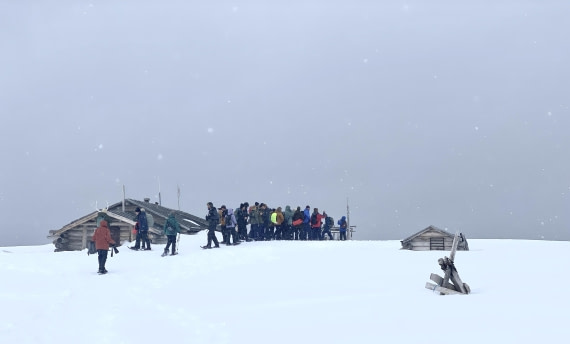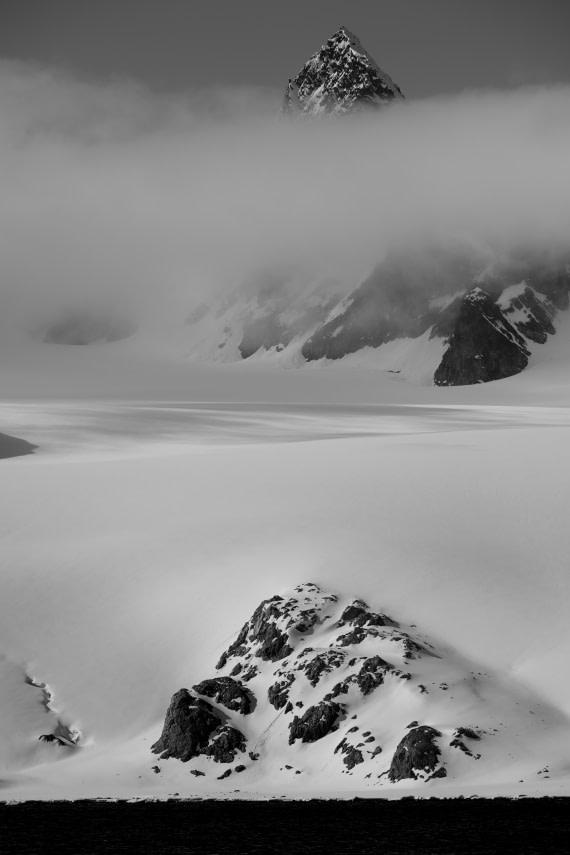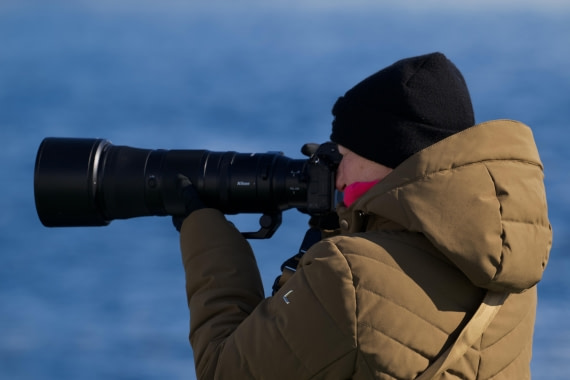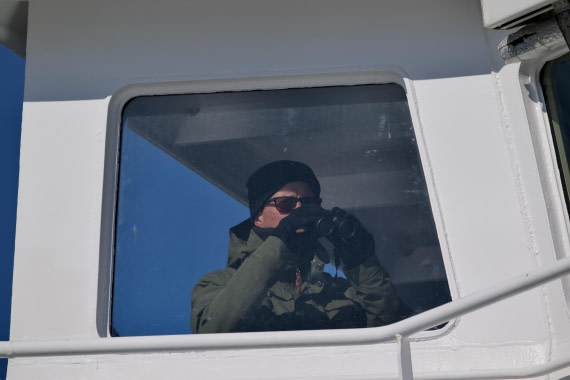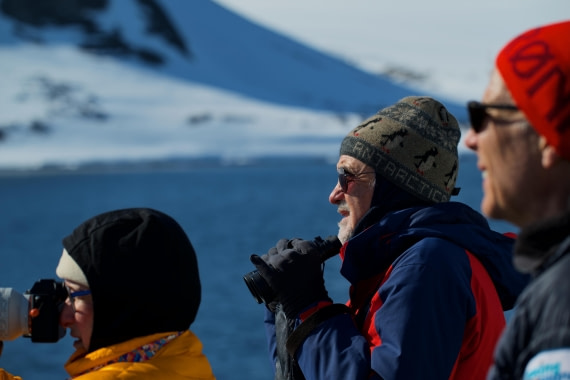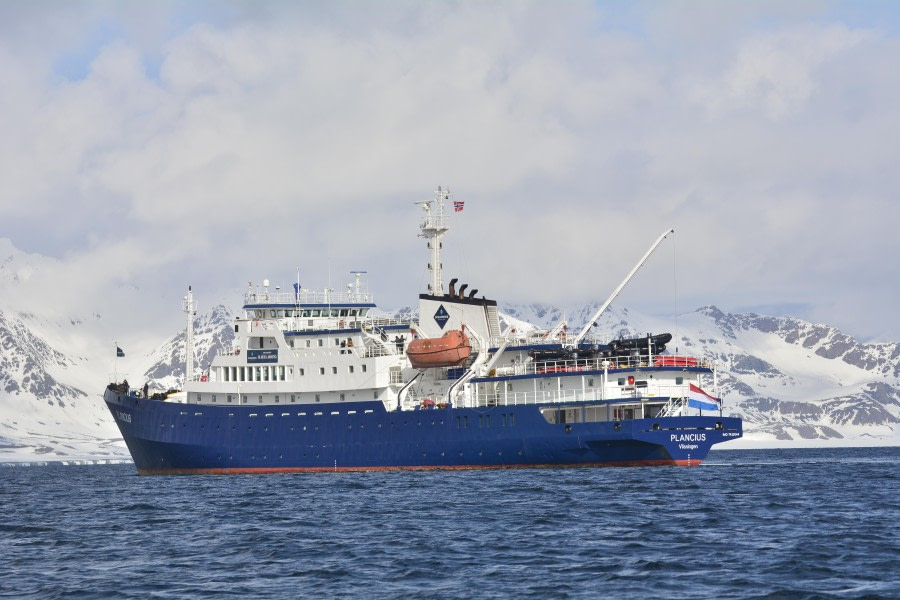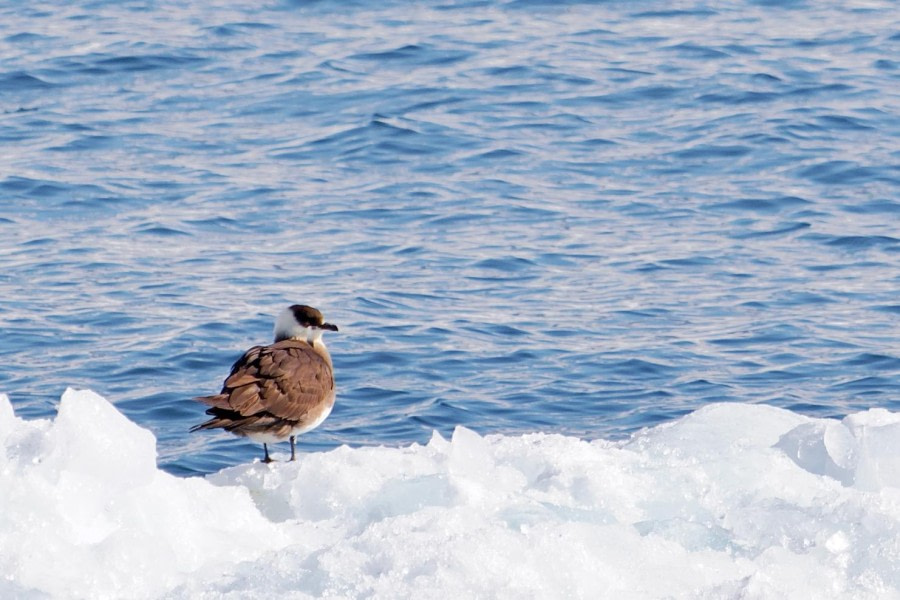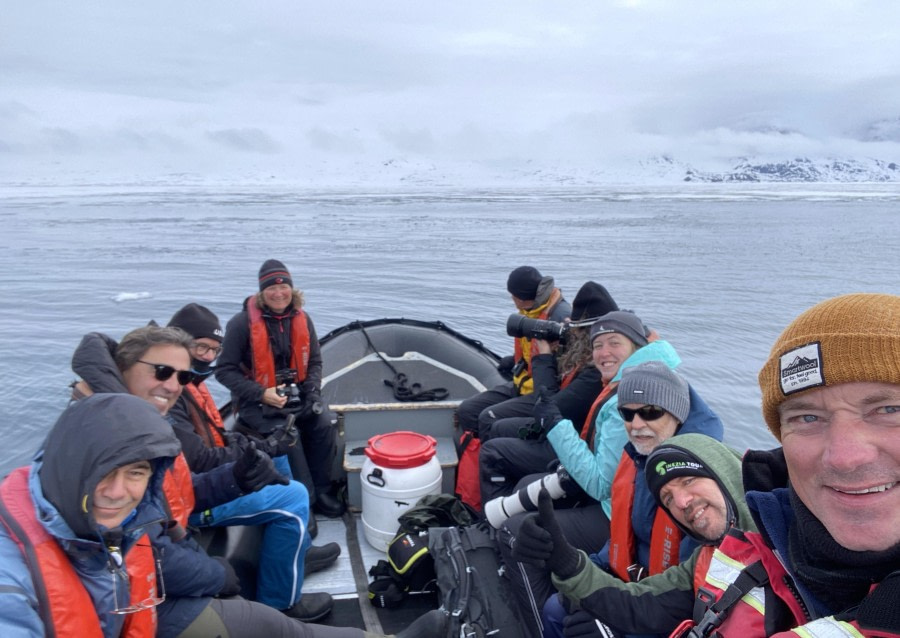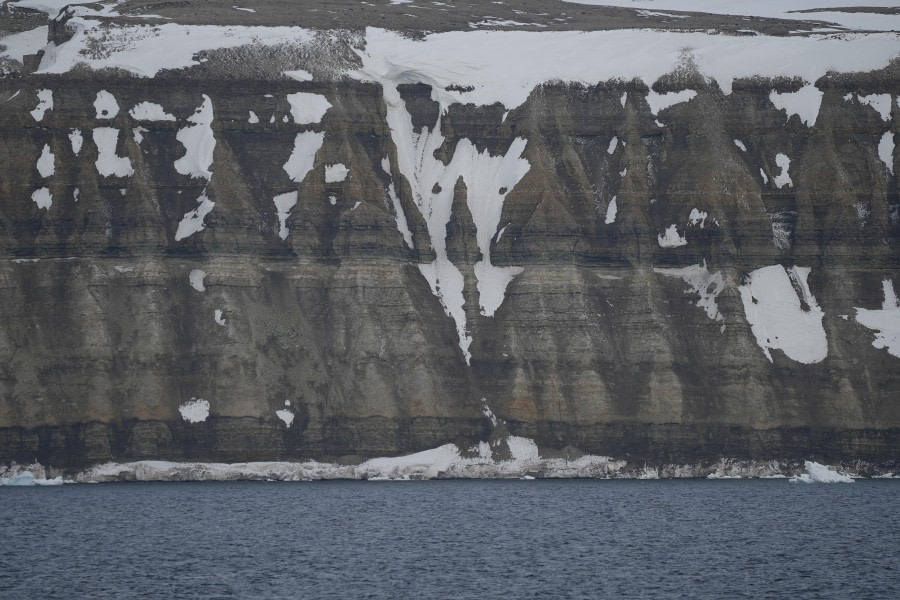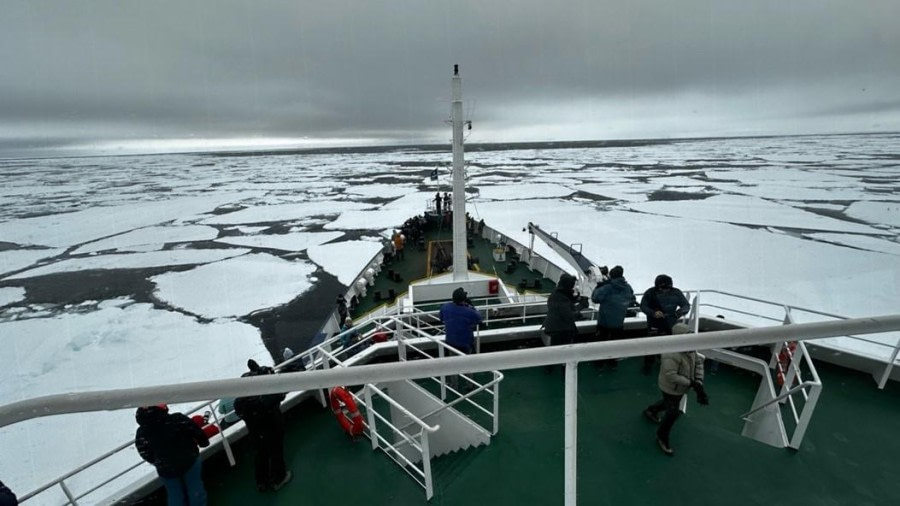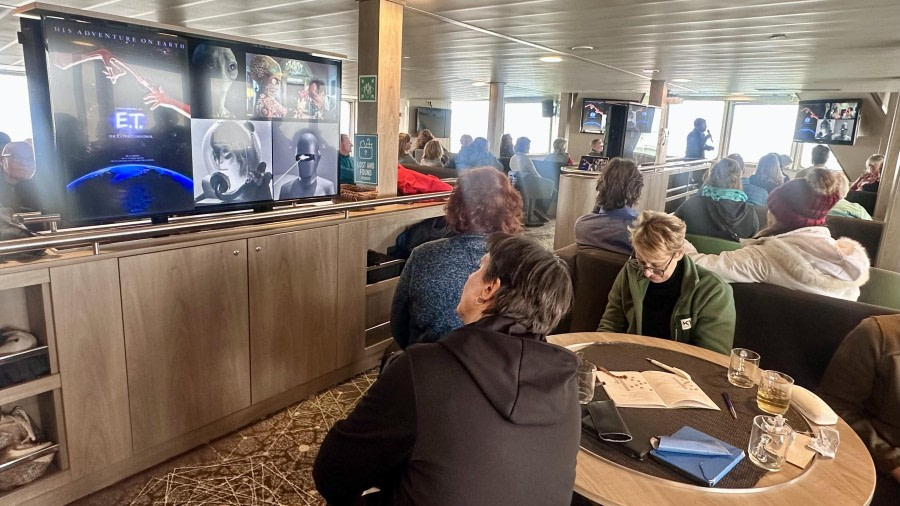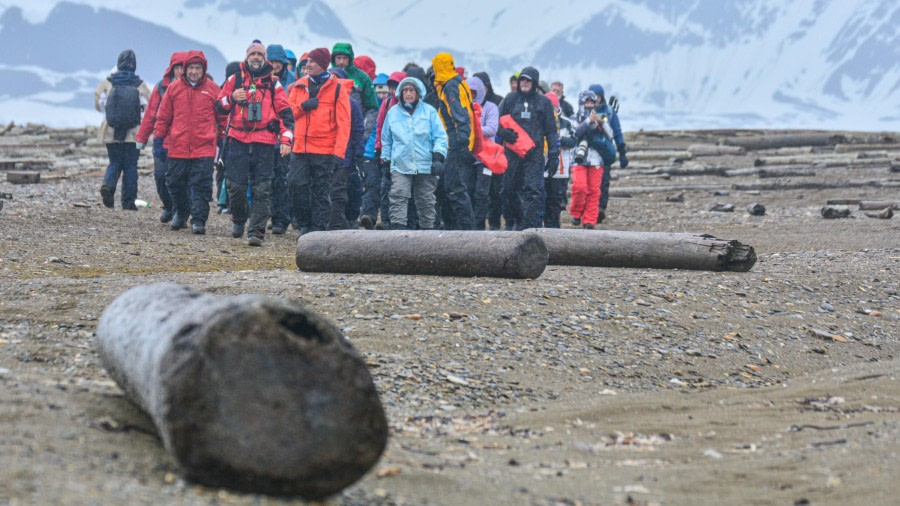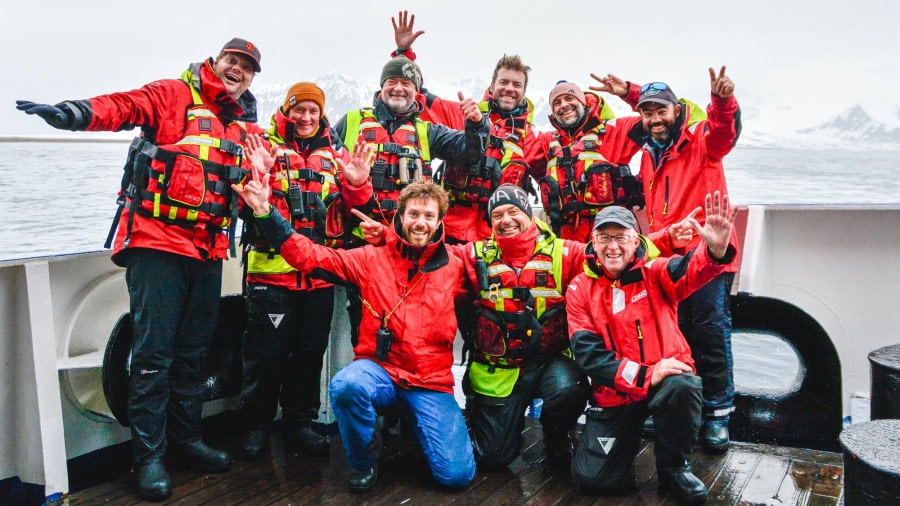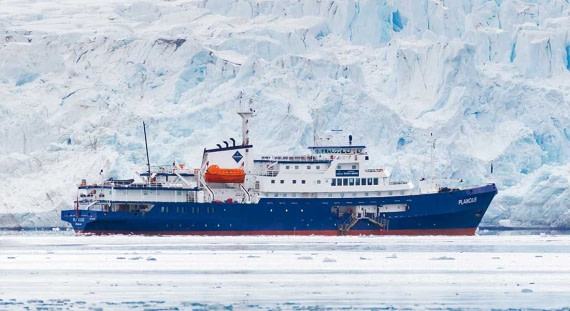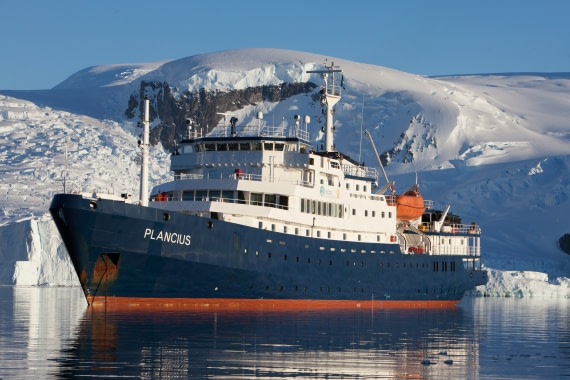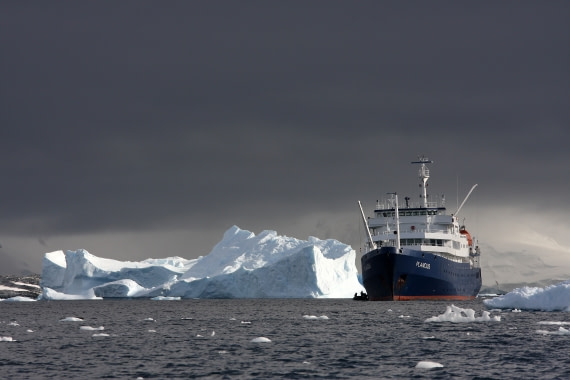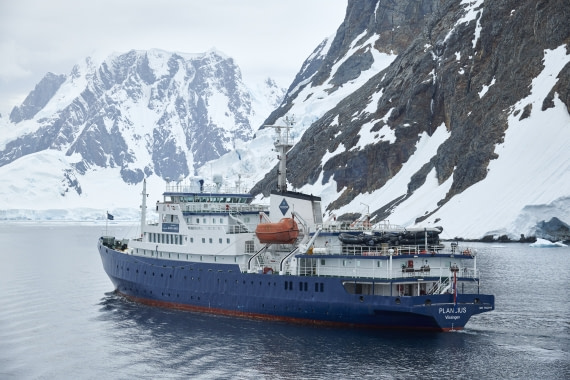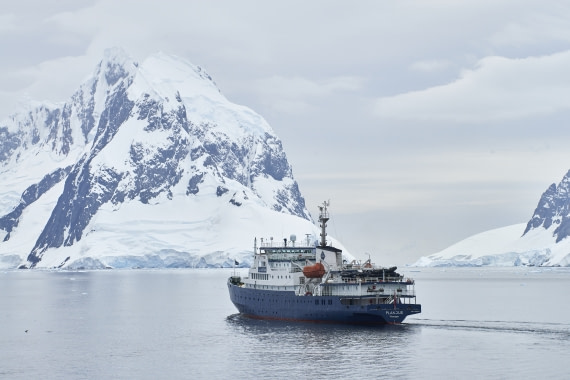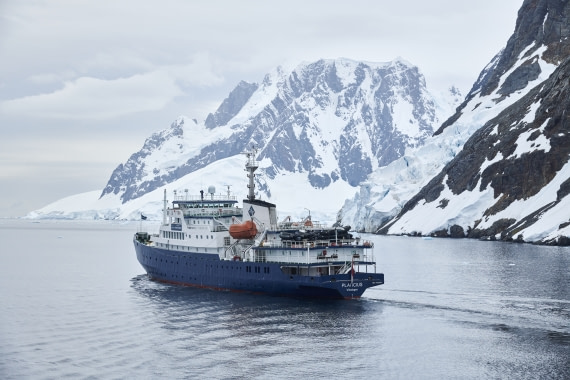| Date: |
06.06.2025 |
| Position: |
79°34.1’N / 018°52.9’E |
| Wind: |
SE6 |
| Weather: |
Snow |
| Air Temperature: |
-1 |
Overnight we sailed east following a parallel trajectory along the northern part of the island of Spitsbergen. Early in the morning, our heading changed towards the east-south south-east aiming to the entrance of the Hinlopen strait. Since it is early in the season, we had fear that the entrance could be covered with sea ice, consequently, our plan-A could be thwarted. Operating in this area requires endless patience and a good bunch of luck in terms of ice conditions and weather. These last two have the last word over any activity we propose.
As we entered the Hinlopen strait, the conditions were calm and visibility was excellent. However, as the time to wake up the ship came, visibility dropped and turned against us. When our expedition leader came to the bridge visibility dropped to a few tens of meters, the wind increased to more than 25 knots and snow started to fall. Little we imagined that the forecast was going to be more extreme than expected. We approached our intended site for activities, the imposing area of Alkefjellet - The Cliffs of the Auks. This incredible geological feature made of dolerites, is the place where thousands of birds auks, kittiwakes and various types of gulls among other species of birds nest. As we approached the place we commenced our operations launching our zodiacs. We managed to launch three zodiacs, however as our operation continued conditions deteriorated, visibility reduced and the wind started to gust up to 30 knots. Safety of our operations is of utmost importance for us and knowing that the forecasted wind was due to increase, our Expedition Leader Jan and our Assistant Expedition Leader Eduardo decided to cancel the operation. Hence, zodiacs came back in a choppy sea. We retrieved all passengers from the first three zodiacs back on board and shortly after, we brought all our zodiacs back on board.
We stayed in the area a couple of hours keeping a distance of about one kilometre to the cliff so our ornithologists could enjoy a few views of the cliffs and the nesting birds at least. By midday we relocated our vessel and we started to head towards our next target, Torrellneset. This transit was very pleasant and by 2 in the afternoon we started to see the polar caps as well as the raised beaches of Nordaustlandet. Immediately to our port side, towards East was the Vestfona ice cap showing its smooth-rounded shaped ice.
The landscape turned dramatically. From the jagged peaks we got used to see during the first days of our cruise, to these smooth ice caps and some table-shaped mountains. By 2:00 as we approached Torellneset the South wind that had been blowing over the last hours pushed large brash ice into the area of our landing site. Both landing possibilities at Torellneset, either in the south or towards the west, were blocked by densely packed brash-ice making zodiac operations impossible. Consequently we decided to reverse our course, and sail back along the Hinlopen strait towards the Wahlenbergfjord.
Named after the Swedish naturalist Göran Wahlenberg, this vast fjord penetrates 46 kilometres into the eastern part of Nordaustlandet. This is the fifth largest fjord in the Svalbard Archipelago and offers unique views of this desolate-almost alien-landscape. The fjord has a smaller bay, called Palanderbukta, after a Swedish naval officer, Louis Palander. As we entered the main fjord, we could see that half of it was still covered in sea ice; the perfect place to find polar bears. Hence, our naturalist on board, our guides and officers in the bridge, started to comb every corner of the distant fjord. Many seals lying in the ice were soon identified as well as large flocks of birds like guillemots and kittiwakes. An occasional walrus came to the surface to breath. Scouting with all the instruments on board we could see signs of life in this desolate landscape and soon, Eduardo announced the sight of a distant polar bear in the area of Idunfjellet, exactly between the Idunbreen and Frazerbreen glacier fronts. The bear could be seen walking in the distance for a while. About half an hour after, another bear was spotted. Eduardo announced it and indeed, far in the distance, at the base of Zeipelfjellet mountains, a bear could be seen walking slowly among the ice. This were two telescopic bears that despite their distance, proved that wildlife exist here.
The sun shone for a while making the sight of these bears agreeable in the outer decks. Around 17:30 we left the area of Whalenbergfjord and headed towards the north. In our way out, we pass the island of Gyldénoøyane, where to our surprise we found a third bear lying on the ice! After a careful inspection of this area, we found a fourth bear! Now we think this couple was a mother and a cub, having a break after having a meal. Close to them we identified a carcass from which a few birds were still feeding. This mother and her cub were a bit closer, and gave good sights to all of us.

